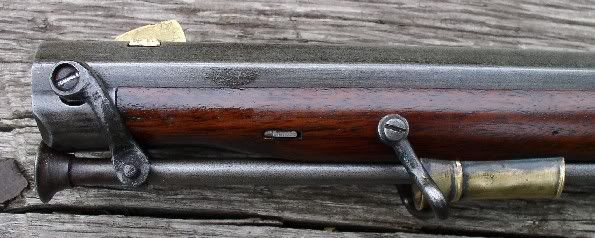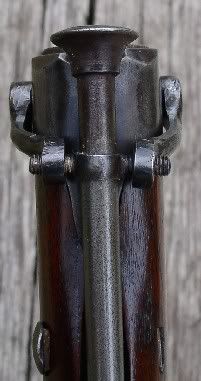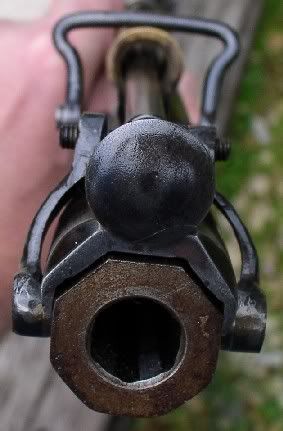robinghewitt
62 Cal.
- Joined
- Jun 26, 2004
- Messages
- 2,605
- Reaction score
- 22
On another list I dared suggest that the fat end of the ram rod should go down the pipe first and I'me getting chewed :shocked2:
Here's some replies, I am "Snotty" :grin:
"Snotty"...I believe you are incorrect. I have spoken to fellows who also have Baker and Brunswick rifles and rods and the mushroom end is to fit the palm of the hand to ease loading. Mushroom end also has a hole through the shaft to facilitate the tool which will give leverage to the act of turning the ball puller. The business end had a brass fitting (missing on mine) which threaded onto the small end and this was used to shove the ball down the barrel. I know that the mushroom end was never designed to go down the barrel. This is a learning place for all of the members. Thanks...Dave
---------------------------
You are correct Dave, the mushroom head is definitely not for going down the barrel. Any that do are not to British WD specs & have been modified.
Interestingly something that seems to fuel the belief that the large end goes down the bore is the production of some good quality repro Baker Rifles being made, these have the head too small. I gather that they copied an original Baker. I have seen several Bakers, mainly in the U.S., which do have this same small mushroom head & they usually have had the sword bar removed as well. It is the opinion of the expert on these, De Witt Bailey, that these rods have been modified along with the other alterations. In my opinion they were probably streamlined for carriage in a carbine bucket as all the mods, removal of sword bar, sling rings & small ramrod head, all facilitate this use. It is also speculated that they were just de-militarised, so as to lessen the odds of them ending up in quasi-military hands. Adrian.
Here's some replies, I am "Snotty" :grin:
"Snotty"...I believe you are incorrect. I have spoken to fellows who also have Baker and Brunswick rifles and rods and the mushroom end is to fit the palm of the hand to ease loading. Mushroom end also has a hole through the shaft to facilitate the tool which will give leverage to the act of turning the ball puller. The business end had a brass fitting (missing on mine) which threaded onto the small end and this was used to shove the ball down the barrel. I know that the mushroom end was never designed to go down the barrel. This is a learning place for all of the members. Thanks...Dave
---------------------------
You are correct Dave, the mushroom head is definitely not for going down the barrel. Any that do are not to British WD specs & have been modified.
Interestingly something that seems to fuel the belief that the large end goes down the bore is the production of some good quality repro Baker Rifles being made, these have the head too small. I gather that they copied an original Baker. I have seen several Bakers, mainly in the U.S., which do have this same small mushroom head & they usually have had the sword bar removed as well. It is the opinion of the expert on these, De Witt Bailey, that these rods have been modified along with the other alterations. In my opinion they were probably streamlined for carriage in a carbine bucket as all the mods, removal of sword bar, sling rings & small ramrod head, all facilitate this use. It is also speculated that they were just de-militarised, so as to lessen the odds of them ending up in quasi-military hands. Adrian.









